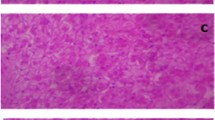Abstract
Three-to eight-day oldMysidopsis bahia were used to evaluate the acute toxicities of 17 industrial surfactants having a wide range of physiochemical characteristics. LC50s based on nominal concentrations covered approximately three orders of magnitude (<1 to >4,000 mg/L). The base structure of the surfactants (i.e., aromatic or aliphatic, branched or linear) was not a factor controlling toxicity. Low solubility surfactants with low ethylene oxide (EO) molar ratios were the most toxic surfactants tested. Ethylene oxide chain length was the best predictor of toxicity, and would be a good parameter to use to “screen” for surfactant toxicity in hazard assessment. Substitution of terminal OH with SO3 or PO4 reduced toxicity of a selected group of surfactants. Sensitivity ofM. bahia up to 26 days old was not significantly different from that of 3-to 8-day old animals. Use of one surfactant as a reference toxicant demonstrated that sensitivity ofM. bahia was consistent throughout the various tests.
Similar content being viewed by others
References
15 U.S.C. (1976) 2601–2629, Suppl, IV 1980
AD Little Company (1977) Human safety and environmental aspects of major surfactants. NTIS PB-301 193. Springfield, VA, 546 pp
Ahel M, Giger W (1985) Determination of nonionic surfactants of the alkylphenol type of high-performance liquid chromatography. Anal Chem 57:2584
American Public Health Association (APHA),American Water Works Association, Water Pollution Control Federation (1980) Standard Methods for the Examination of Water and Wastewater. American Public Health Association, Washington, DC
Bro-rasmussen F, Christiansen K (1984) Hazard assessment-a summary of analysis and integrated evaluation of exposure and potential effects from toxic environmental chemicals. Ecol Model 22:67–84
Gentile SM, Gentile JH, Walker J, Hethshe JF (1982) Chronic effects of cadmium on two species of mysid shrimp:Mysidopsis bahia andMysidopsis bigelowi. Hydrobiologia 93:195–204
Goodman LR, Cripe GM, Moody PH, Halfell DG (1987) Acute toxicity of melathion, tetrabromo-bis-phenol-a, and tributyltin chloride to mysids (Mysidopsis bahia) of three ages. Bull Environ Contam Toxicol (In press)
Kimerle RA, Swisher RD (1977) Reduction of aquatic toxicity of linear alkylbenzene sulfonate (LAS) by biodegradation. Water Research 11:31–37
Lewis MA, Perry RL (1981) Acute toxicities of equimolar and equitoxic surfactant mixtures toDaphnia magna andLepomis macrochirus. Aquatic toxicology and hazard assessment. ASTM STP 737. Branson DR, Dickson KL (eds), pp 402–418
Maki AW, Rubin AJ, Sykes RM, Shank RL (1979) Reduction of nonionic surfactant toxicity following secondary treatment. JWPCF (51) 9:2301–2313
Nimmo DR, Hamaker TL (1982) Mysids in toxicity testing-a review. Hydrobiologia 93:171–178
Sherman O, McLaughlin M, Walton J (1987) Surfactantsspurting up by cleaning up. Chem Week 4:21–48
Swedmark M, Braaten B, Emanuelson E, Granmu A (1971) Biological effects of surface agents on marine animals. Mar Biol 9:183–201
Swisher RD (1987) Surfactant biodegradation. Marcel Dekker, New York, 1085 pp
US Environmental Protection Agency (1985) Methods for measuring the acute toxicity of effluents to freshwater and marine organisms. EPA 600/4-85/013. USEPA, Cincinnati, OH
US Environmental Protection Agency (1987) Short-term methods for estimating the chronic toxicity of effluents and receiving waters to marine and estuarine organisms. EPA 600/4-87-028 DRAFT. Cincinnati, OH
Wildish DJ (1972) Acute toxicity of polyoxyethylene esters and polyoxyethylene ethers toS. salar andG. oceanicus. Water Research 6:759–762
Author information
Authors and Affiliations
Rights and permissions
About this article
Cite this article
Hall, W.S., Patoczka, J.B., Mirenda, R.J. et al. Acute toxicity of industrial surfactants toMysidopsis bahia . Arch. Environ. Contam. Toxicol. 18, 765–772 (1989). https://doi.org/10.1007/BF01225014
Received:
Revised:
Issue Date:
DOI: https://doi.org/10.1007/BF01225014




